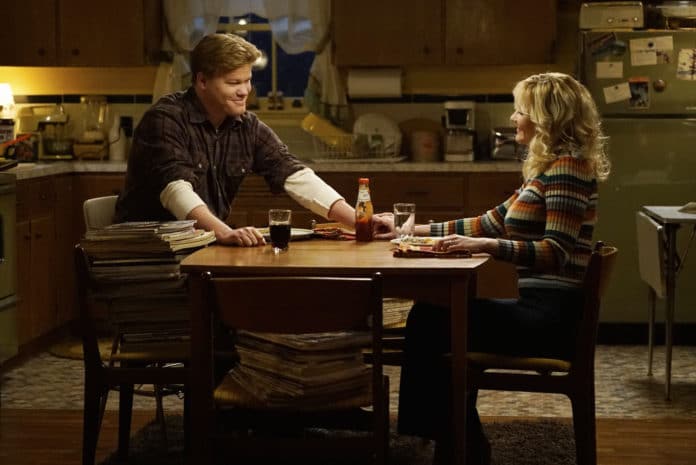Writer-producer Noah Hawley’s first go at turning the classic 1996 film “Fargo” into a TV series for FX turned out to be a perfect bull’s-eye, the best show of its kind since “Breaking Bad.” It furthered the original film’s notions of the ethical rot and simple heroism that can exist just beneath the surface of a social permafrost known as “Minnesota nice.”
The show’s splendid first season, which aired in 2014, demonstrated careful stewardship of the setting and tone first imagined by Joel and Ethan Coen, relying on a dark-pit-of-the-soul sensibility that is made even more interesting by a taste for the absurd. In the updated version, an unhappily married insurance agent, played by Martin Freeman, tried to cover up the murders of his wife and a local sheriff while pursued by a determined female deputy, played by Allison Tolman.
The story echoed the film in a way that disarmed the new “Fargo’s” skeptics. At the same time, Hawley wisely added a Mephistophelean hit man (Billy Bob Thornton), whose presence broadened the “Fargo” mythology and opened its reach into an epic story of crime syndicates across the upper Midwest.
Now imbued with the confidence of near-universal acclaim (including an Emmy for outstanding miniseries), Hawley has delivered a second season of “Fargo” that is much more of a creative swerve from the first season and signals a departure from Coenville – though the brothers are still credited as executive producers. The show is better for it, in the long run.
This “Fargo” (premiering Monday) is looser and freer with its complicated storytelling and editing techniques, and more giddy with its references, as evidenced by its opening scene with make-believe outtakes from an old Ronald Reagan movie and, not much later, a close encounter with a UFO.
The plot dials back to 1979, when a triple homicide at a roadside Waffle Hut in Luverne, Minn., is investigated by state trooper Lou Solverson (Patrick Wilson), who quickly traces a lead back to the Gerhardts, a mob family in Sioux Falls, S.D., that has a lock on the territory’s drug trade. After a stroke immobilizes boss Otto Gerhardt (Michael Hogan), it’s up to his wife, Floyd (Jean Smart), to manage the sordid business, which includes fending off a hostile takeover from the Jewish mafia in Kansas City.
Some spoiler alerts for what’s ahead: Both the police and the Gerhardts have an abiding interest in locating the Waffle Hut killer (Kieran Culkin), whose body happens to be resting in the spare freezer in the garage of Ed and Peggy Blumquist (Jesse Plemons and Kirsten Dunst) – put there after a fateful hit-and-run with the Blumquists’ Corvair.
Of this new cast of characters, Ed and Peggy are the “Fargo”-iest, a butcher and a hairdresser caught at the familiar junction of choosing between right (reporting the death) and wrong (hello, meat grinder) and worried that either decision will jeopardize their dreams: Ed has been saving money to buy the Luverne butcher shop from his boss, while Peggy has fallen for the promises of a series of expensive self-help workshops.
Although the polyblend drabness of Carter-era malaise makes for a fun backdrop – from the long waits at gas stations to the snug fit of Peggy’s denim culottes – the retro feeling is perhaps most apparent in Hawley’s affection this time around for split-screen segues and other film narrative techniques that give “Fargo” an almost grindhouse-y feeling of amateur cinema or made-for-TV movies of ’70s vintage.
These artistic touches sometimes chafe against the TV format, especially considering that the episodes are already chopped up to accommodate FX’s many back-end commercial breaks. The music cues, including a score by Jeff Russo, seem to be intentionally all over the place, which is both fitting and strange; there are overstated symphonies, portentous arias and, of course, inspired snippets of ’70s pop and rock.
The attention to detail in sets and costumes is commendable (in four episodes, I didn’t detect a single anachronism), but the sight of all those characters in wide-lapel pleather has something of a Quentin Tarantino effect – not only on the viewer, but also on Hawley and his writers. A scene in which one of the Kansas City mob heavies (Bokeem Woodbine) intimidates a seedy salesman (Mike Bradecich) by rolling his necktie into a typewriter carriage and reciting a letter of complaint to Sears, Roebuck & Co. emits a whiff of Samuel L. Jackson’s moves and dialogue in “Pulp Fiction.”
In fact, the only complaint one could muster about “Fargo” this time is that it spreads itself on too thickly in the first two episodes. In moments that count, the show can seem more interested in style than substance.
Season 2 also introduces so many characters (played by equally strong actors, including Ted Danson as Trooper Solverson’s father-in-law, Hank; Cristin Milioti as Solverson’s wife, Betsy; and Nick Offerman as Karl, Luverne’s most conspiracy-minded lawyer – to name a few) and so many fascinating threads at once that it threatens to collapse under its own weight.
The intricacies do begin to cohere by Episode 4 and from there – particularly in a great scene in which Solverson pays the Blumquists a visit at home – the show begins to feel more purely and pleasurably like a piece of “Fargo’s” ever-expanding tapestry of moral ambiguity. Even when letting it all hang out, “Fargo” is a masterful achievement.
Fargo (68 minutes) returns Monday at 10 p.m. on FX.






